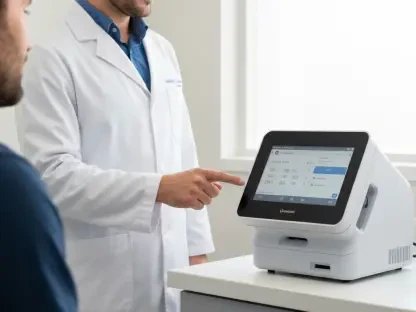The burgeoning field of microbiome science holds significant promise for revolutionizing clinical care. At the core of this research is an exploration of the human microbiome, the vast community of microorganisms inhabiting our bodies. Recent technological advances have paved the way for mapping these microbial landscapes with unprecedented precision, yet translating these insights into routine medical practice poses a formidable set of challenges. This exploration delves into the potential and hurdles of integrating microbiome science into everyday clinical settings.
The Promise and Challenges of Microbiome Science
The central theme of research in microbiome science addresses how the intricate relationship between humans and their microbial counterparts can impact health and disease. This involves pivotal questions concerning the variability of these microbial communities and their disruption, particularly in terms of diagnostic and therapeutic applications. Despite its promising nature, the integration of microbiome science into clinical practice is hindered by issues such as lack of standardization, the need for robust clinical evidence, and educational gaps among healthcare providers.
Contextual Understanding of Microbiome Research
The significance of microbiome research stems from its potential to transform our understanding of human health and disease management. By identifying patterns and markers within the microbiome, scientists can devise diagnostic tools or treatments tailored to individual patients. This has broad implications, not only for patient care but also for public health strategies. As interest grows, acknowledging the heterogeneity of microbial communities and the absence of standardized research protocols becomes paramount for achieving meaningful clinical applications.
Research Methodology, Findings, and Implications
Methodology
Research within this field employs a combination of cutting-edge sequencing technologies and bioinformatics tools to analyze vast amounts of microbiome data. These techniques enable detailed mapping of microbial communities and the exploration of their function and interactions with the human host. The systematic approach allows for examining microbial roles in health and disease across various conditions, facilitating the translation of microbiome science into clinical relevance.
Findings
Significant discoveries have emerged, showing the microbiome’s potential as a diagnostic tool. For example, specific microbial signatures have been associated with colorectal cancer, offering a less invasive method to enhance diagnostic accuracy. Likewise, advances in bioinformatics have facilitated the transformation of complex microbial datasets into metrics that can be readily interpreted within a clinical framework. These breakthroughs open new pathways for preventative and personalized medicine.
Implications
The implications of these findings are substantial, potentially reshaping clinical diagnostics and therapeutics. The application of microbiome insights could lead to improved disease risk assessments and treatment outcomes. Yet, the implementation of such practices is challenged by the need for cost-effective surveillance technologies and validation across more extensive and diverse population cohorts. Furthermore, a nuanced understanding of how to apply microbial data in real-world settings remains a critical step toward broader clinical adoption.
Reflection and Future Directions
Reflection
Reflecting on the current state of microbiome research reveals several areas for growth and improvement. Overcoming obstacles such as methodological and logistical hurdles is vital. Addressing these challenges necessitates developing standardized protocols and expanding clinical trials to include diverse populations. This reflection highlights the need for collaboration across sectors to facilitate the transition from research findings to practical applications within healthcare settings.
Future Directions
Future research should focus on unexplored questions and areas that may yield further insights. Specifically, combining microbiome-based therapies with conventional treatments may provide synergistic benefits. Additionally, fostering collaborations among academia, industry, and non-academic healthcare providers will bolster efforts to integrate microbiome science into everyday medical practice. Understanding the broader healthcare network’s role could significantly advance the practical application of microbiome diagnostics and therapeutics.
Conclusion
In summary, while microbiome research offers compelling opportunities for enhancing clinical care, significant work remains to overcome current barriers. As research efforts continue to refine trial designs and standardize methodologies, the integration of microbiome science into routine practice becomes more feasible. By addressing educational gaps among clinicians and forming strategic partnerships, the field may achieve greater clinical applicability. The future holds a promise of personalized diagnostics and treatments that align with the complex interplay of the human microbiome, which represents a transformative potential for modern medicine.









